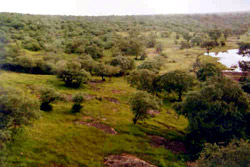The strategic location of Karera in Madhya Pradeshis quite significant. It is positioned approximately at 25.47° N 78.15° E. It rises to a height of 305 meters or 1000 feet above the mean sea level.
In order to study the identifiable features of a town or place in India, knowledge about demography becomes the first and foremost thing that one needs to emphasize. Karera too follows the same principal. In this matter the total population has been enumerated to be 23,491. Out of it, male populace constitutes of 55 percent. Female populace is less than their male counterparts, which is also reflected in their population count as well. Thus 45 percent is the total female populace of Karera of Madhya Pradesh. In Karera, 16 percent of the total population is below six years of age.
 How much a place has achieved development can be identified from its literacy rate. As far as the average literacy rate of Karera in Madhya Pradesh is concerned, it showed a measurement of 65 percent, even higher than that of India, which has got average literacy rate of 59.5 percent. Thus it automatically led one to conclude that Karera is quite developed. In Karera difference exists between male and female literacy rates. Thus the rate of male literacy constitutes of 73 percent. However female literacy rate is less and constitutes of 54 percent.
How much a place has achieved development can be identified from its literacy rate. As far as the average literacy rate of Karera in Madhya Pradesh is concerned, it showed a measurement of 65 percent, even higher than that of India, which has got average literacy rate of 59.5 percent. Thus it automatically led one to conclude that Karera is quite developed. In Karera difference exists between male and female literacy rates. Thus the rate of male literacy constitutes of 73 percent. However female literacy rate is less and constitutes of 54 percent.
Primary attractions include Karera Bird Sanctuary and Madhav Shivpuri National Park where people from Karera and near by areas visit in large number.
To facilitate easy connectivity with other places, Karera is well connected by rails , roads and also airport. Airport at Gwalior, Jhansi Junction Railway Station lies in vicinity. National Highway 25 runs via Karera.



















